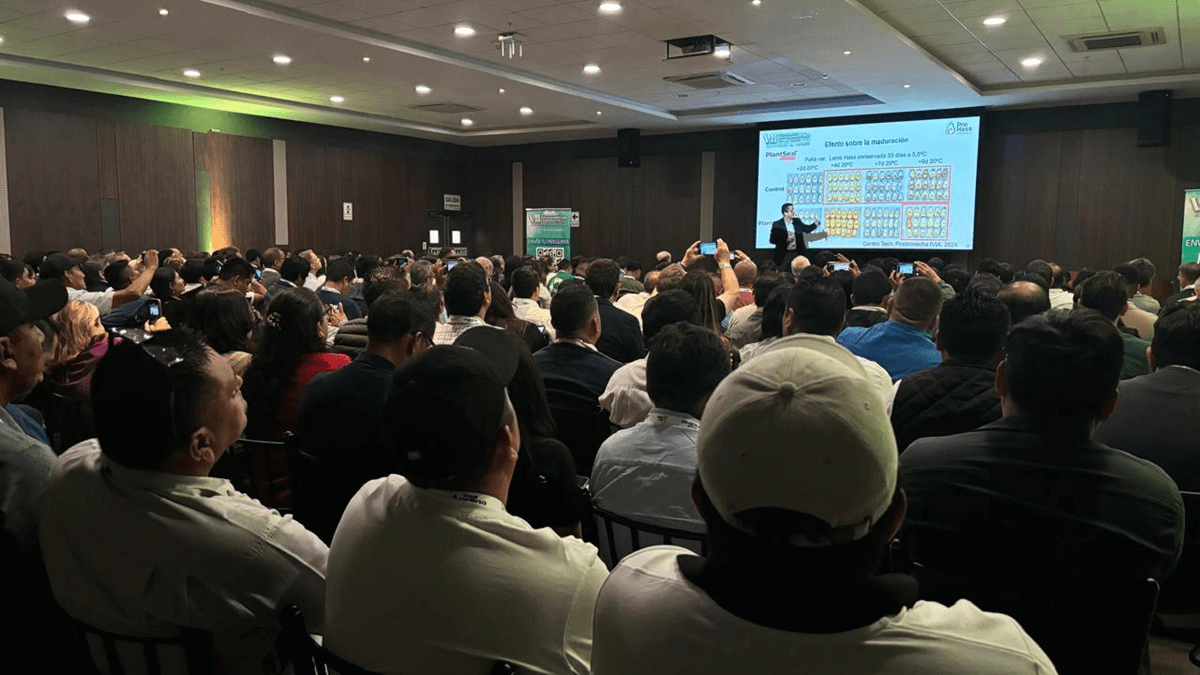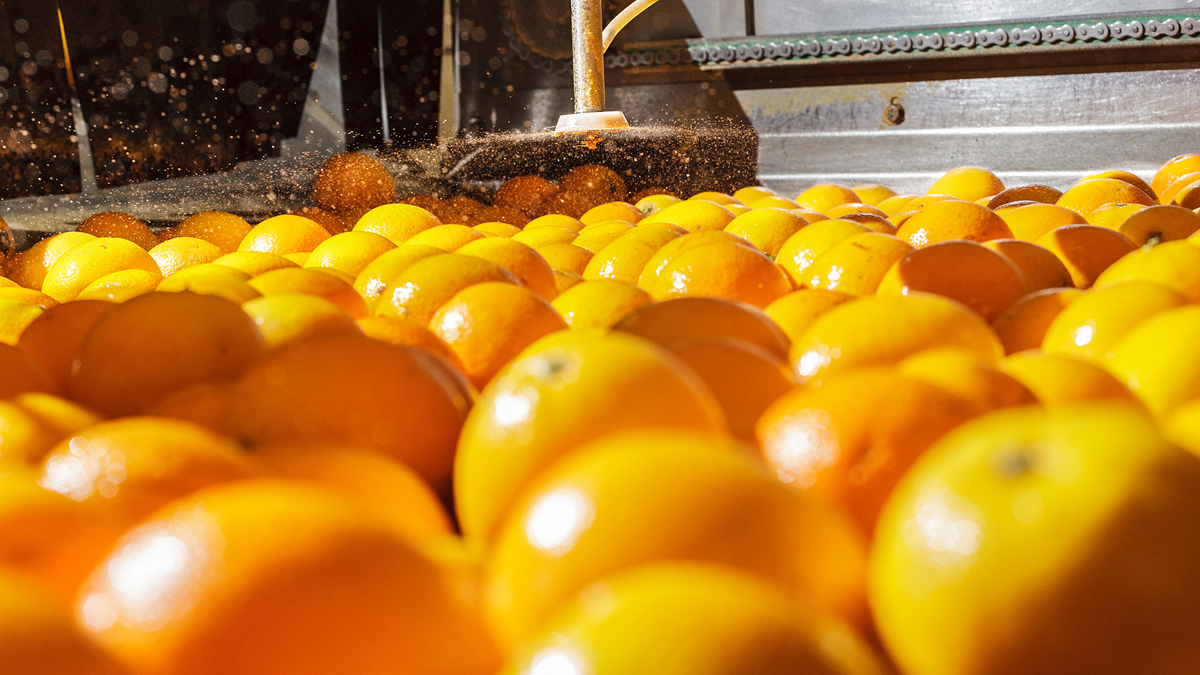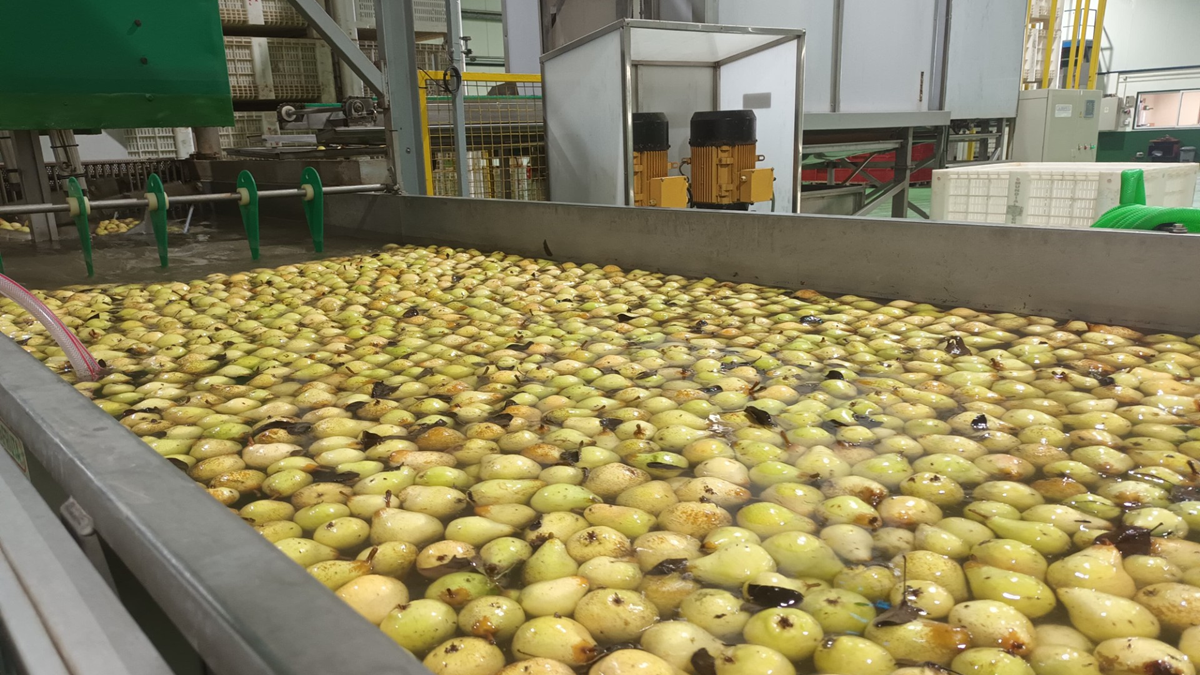Phytosanitaries
General recommendations for the postharvest treatment of citrus fruits ? Part II
Once the fruit is conditioned upon arrival at the horticultural center, it is time to package it in the chosen formats. The fruit is packaged on a continuous line composed of different stages: washer, pre-drying tunnel, wax applicator, drying tunnel, sizer, and final packaging (boxes, mesh bags, etc.). It is crucial to work correctly at each stage. Washer The fruit must be thoroughly washed to remove dust (dirt), fungal spores, soluble residues from pre-harvest treatments, and bacteria. Washing should be done with a neutral or alkaline soap and a disinfectant (preferably peracetic acid). Rinse the fruit well and keep all equipment elements clean. Pre-drying tunnel The fruit should enter the pre-drying tunnel free of soap, and the accumulation of soap at the entrance should be avoided. The tunnel temperature should be sufficient to completely dry the fruit before entering the wax applicator, preventing hot air from projecting onto the wax applicator. It is crucial to maintain minimal relative humidity inside the tunnel. The tunnel should always be kept clean, disinfected, and in optimal operating conditions. Coating (wax) Due to the removal of natural wax during the washing and disinfection process, and in order to provide a fungicidal treatment when necessary, a coating or wax must be applied to the fruit's surface. This coating should primarily serve to replace the fruit's natural wax, protecting it from external agents, preventing dehydration, and allowing gas exchange (O2 and CO2). Additionally, these coatings often include a fungicide dose (usually imazalil). It's preferable to incorporate the fungicide during the coating manufacturing process rather than adding it in the storage facility. By manufacturing the wax with the fungicide, stability and reliability are improved, as all formulations undergo rigorous quality control certified by CITROSOL. Wax Applicator Regarding the wax applicator, the brushes must always be clean and replaced whenever they are deteriorated. The rotation speed of the brushes will depend on the fruit variety. The brushes should be thoroughly dry before starting work. It is crucial to properly clean the brushes when switching treatments, as well as control the wax dose, keeping it consistently between 1.0 and 1.2 liters per ton of fruit. An incorrect dose can lead to a defective coating, reduced shine, less weight loss control, and low levels of fungicide residues (when incorporated into the formulation). An excess dose can cause foam formation, stickiness, dirt on the line, and an overabundance of fungicide residues. Drying tunnel The temperature should be sufficient to dry the wax and form the film adequately. Typically, temperatures of 30-38 ºC are used for low-temperature drying waxes and 38-45 ºC for others. The same working guidelines as for the pre-drying tunnel should be followed. Conclusions The coating application process is a critical point to achieve proper storage conditions. Similarly, choosing a good formulation is essential for obtaining a satisfactory outcome. CITROSOL offers a wide range of coatings designed according to the technical and commercial needs of customers (See Table). As a novelty this year, CITROSOL has introduced SunSeal® Vegan wax, which, besides having the V-LABEL certification, possesses excellent properties as a coating.
04 December, 2023
Once the fruit is conditioned upon arrival at the horticultural center, it is time to package it in the chosen formats. The fruit is packaged on a continuous line composed of different stages: washer, pre-drying tunnel, wax applicator, drying tunnel, sorting, and final packaging (boxes, mesh bags, etc.). It is crucial to work correctly at each stage. WasherThe fruit must be thoroughly washed to remove dust (dirt), fungal spores, soluble residues from pre-harvest treatments, and bacteria. Washing should be done with a neutral or alkaline soap and a disinfectant (preferably peracetic acid). Rinse the fruit well and keep all equipment elements clean. Pre-drying tunnelThe fruit should enter the pre-drying tunnel free of soap, and the accumulation of soap at the entrance should be avoided. The tunnel temperature should be sufficient to completely dry the fruit before entering the wax applicator, preventing hot air from projecting onto the wax applicator. It is crucial to maintain minimal relative humidity inside the tunnel. The tunnel should always be kept clean, disinfected, and in optimal operating conditions. Coating (wax)Due to the removal of natural wax during the washing and disinfection process, and in order to provide a fungicidal treatment when necessary, a coating or wax must be applied to the fruit's surface. This coating should primarily serve to replace the fruit's natural wax, protecting it from external agents, preventing dehydration, and allowing gas exchange (O2 and CO2). Additionally, these coatings often include a fungicide dose (usually imazalil). It's preferable to incorporate the fungicide during the coating manufacturing process rather than adding it in the storage facility. By manufacturing the wax with the fungicide, stability and reliability are improved, as all formulations undergo rigorous quality control certified by CITROSOL. Wax Applicator Regarding the wax applicator, the brushes must always be clean and replaced whenever they are deteriorated. The rotation speed of the brushes will depend on the fruit variety. The brushes should be thoroughly dry before starting work. It is crucial to properly clean the brushes when switching treatments, as well as control the wax dose, keeping it consistently between 1.0 and 1.2 liters per ton of fruit. An incorrect dose can lead to a defective coating, reduced shine, less weight loss control, and low levels of fungicide residues (when incorporated into the formulation). An excess dose can cause foam formation, stickiness, dirt on the line, and an overabundance of fungicide residues. Drying tunnelThe temperature should be sufficient to dry the wax and form the film adequately. Typically, temperatures of 30-38 ºC are used for low-temperature drying waxes and 38-45 ºC for others. The same working guidelines as for the pre-drying tunnel should be followed. ConclusionsThe coating application process is a critical point to achieve proper storage conditions. Similarly, choosing a good formulation is essential for obtaining a satisfactory outcome. CITROSOL offers a wide range of coatings designed according to the technical and commercial needs of customers (See Table). As a novelty this year, CITROSOL has introduced SunSeal® Vegan wax, which, besides having the V-LABEL certification, possesses excellent properties as a coating.












